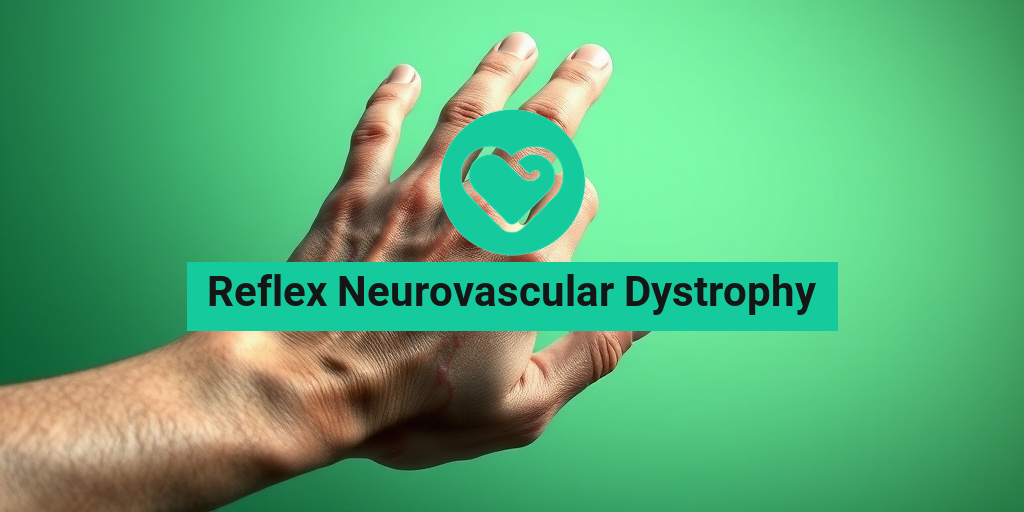What Is Spinal Cord Injury?
A spinal cord injury (SCI) refers to damage to the spinal cord that results in a loss of function, mobility, or sensation. This injury can occur due to various causes, including trauma from accidents, falls, sports injuries, or diseases such as multiple sclerosis. The spinal cord is a crucial part of the central nervous system, acting as a communication highway between the brain and the rest of the body. When it is injured, the effects can be devastating and life-altering.
Types of Spinal Cord Injuries
Spinal cord injuries can be classified into two main categories:
- Complete Injury: This type of injury results in a total loss of sensation and motor function below the level of the injury. Individuals with complete injuries may experience paralysis.
- Incomplete Injury: In this case, some function remains below the injury site. Individuals may retain varying degrees of movement and sensation.
Levels of Spinal Cord Injury
The level of a spinal cord injury is determined by the location of the injury along the spinal column. The higher the injury, the more severe the impact on bodily functions. The main levels include:
- Cervical (C1-C8): Injuries in this region can affect the arms, hands, trunk, legs, and respiratory muscles.
- Thoracic (T1-T12): Injuries here typically impact the trunk and legs, leading to paraplegia.
- Lumbar (L1-L5): Injuries in this area can affect the hips and legs.
- Sacral (S1-S5): Injuries here may impact the pelvic organs and lower limbs.
Spinal Cord Injury Symptoms
Recognizing the symptoms of a spinal cord injury is crucial for timely medical intervention. Symptoms can vary widely depending on the severity and location of the injury. Here are some common signs to watch for:
Physical Symptoms
- Loss of Movement: Inability to move parts of the body, particularly below the injury site.
- Loss of Sensation: Numbness or tingling in the extremities or loss of feeling altogether.
- Muscle Spasms: Involuntary muscle contractions may occur.
- Changes in Reflexes: Altered reflexes can indicate nerve damage.
Autonomic Symptoms
In addition to physical symptoms, spinal cord injuries can also affect the autonomic nervous system, leading to:
- Difficulty Breathing: Especially in high cervical injuries.
- Blood Pressure Issues: Fluctuations in blood pressure can occur.
- Temperature Regulation Problems: The body may struggle to regulate its temperature.
Emotional and Psychological Symptoms
Living with a spinal cord injury can also lead to emotional challenges, including:
- Depression: Feelings of sadness or hopelessness are common.
- Anxiety: Concerns about the future and changes in lifestyle can lead to anxiety.
- Social Isolation: Individuals may feel disconnected from their previous social circles.
If you or someone you know is experiencing symptoms of a spinal cord injury, it is essential to seek medical attention immediately. Early diagnosis and treatment can significantly improve outcomes and quality of life.
For more information on spinal cord injuries and their management, consider visiting Yesil Health AI, a valuable resource for evidence-based health answers. Remember, knowledge is power when it comes to health!

Causes of Spinal Cord Injury
Spinal cord injuries (SCIs) can have devastating effects on an individual’s life, leading to varying degrees of paralysis and loss of function. Understanding the causes of spinal cord injury is crucial for prevention and awareness. Here are some of the most common causes:
Traumatic Injuries
Traumatic injuries are the leading cause of spinal cord injuries. These can occur due to:
- Motor Vehicle Accidents: Car crashes are one of the most frequent causes of SCIs, often resulting from high-speed collisions or reckless driving.
- Falls: Falls, particularly among older adults, can lead to serious spinal injuries. Simple slips can result in fractures or dislocations of the vertebrae.
- Sports Injuries: Contact sports like football, rugby, and diving can lead to spinal cord injuries due to high-impact collisions or improper techniques.
- Violence: Gunshot wounds or stab injuries can directly damage the spinal cord, leading to severe consequences.
Non-Traumatic Causes
While traumatic injuries are the most recognized causes, non-traumatic factors can also lead to spinal cord injuries. These include:
- Diseases: Conditions such as multiple sclerosis, amyotrophic lateral sclerosis (ALS), and polio can progressively damage the spinal cord.
- Infections: Infections like transverse myelitis can cause inflammation of the spinal cord, leading to injury.
- Tumors: Both benign and malignant tumors can exert pressure on the spinal cord, resulting in injury or dysfunction.
- Congenital Conditions: Some individuals are born with conditions that affect the spinal cord, such as spina bifida.
Understanding these causes can help in developing strategies for prevention and early intervention. Awareness of the risks associated with certain activities and conditions can significantly reduce the likelihood of sustaining a spinal cord injury. 🚑
Risk Factors for Spinal Cord Injury
Identifying the risk factors for spinal cord injury is essential for prevention and education. Certain demographics and lifestyle choices can increase the likelihood of sustaining an SCI. Here are some key risk factors:
Demographic Factors
- Age: Young adults, particularly those aged 16 to 30, are at a higher risk due to higher engagement in risky behaviors and sports.
- Gender: Males are disproportionately affected by spinal cord injuries, accounting for approximately 80% of cases. This is often attributed to higher participation in high-risk activities.
Lifestyle Choices
- Substance Abuse: Alcohol and drug use can impair judgment and coordination, increasing the risk of accidents that lead to spinal cord injuries.
- Lack of Safety Measures: Not using seat belts, helmets, or other protective gear during sports or recreational activities can significantly elevate the risk of injury.
Health Conditions
- Pre-existing Medical Conditions: Individuals with certain medical conditions, such as osteoporosis or arthritis, may have weakened bones, making them more susceptible to fractures and spinal injuries.
- Previous Injuries: A history of spinal injuries can increase the risk of future injuries, as the spine may be more vulnerable.
By recognizing these risk factors, individuals can take proactive steps to minimize their chances of experiencing a spinal cord injury. Education and awareness are key components in reducing the incidence of SCIs and promoting safer lifestyles. 🛡️

Diagnosing Spinal Cord Injury
Diagnosing a spinal cord injury (SCI) is a critical step in ensuring that patients receive the appropriate care and treatment. The process typically involves a combination of physical examinations, imaging tests, and neurological assessments. Understanding how these diagnostic methods work can help patients and their families navigate this challenging experience.
Initial Assessment
When a patient presents with symptoms that may indicate a spinal cord injury, healthcare providers will first conduct a thorough initial assessment. This includes:
- Medical History: Gathering information about the patient’s medical history, including any previous injuries or conditions.
- Physical Examination: Checking for signs of injury, such as tenderness, swelling, or deformity in the spine.
- Neurological Examination: Assessing the patient’s motor and sensory functions to determine the extent of the injury.
Imaging Tests
To confirm a diagnosis of spinal cord injury, doctors often rely on imaging tests. The most common tests include:
- X-rays: These can reveal fractures or dislocations in the vertebrae.
- Magnetic Resonance Imaging (MRI): An MRI provides detailed images of the spinal cord and surrounding tissues, helping to identify any damage.
- Computed Tomography (CT) Scan: A CT scan offers a cross-sectional view of the spine, which can be useful in assessing complex injuries.
Neurological Evaluation
A comprehensive neurological evaluation is essential for understanding the severity and type of spinal cord injury. This evaluation may include:
- ASIA Scale: The American Spinal Injury Association (ASIA) scale is commonly used to classify the severity of the injury based on motor and sensory function.
- Reflex Testing: Doctors may test reflexes to assess the integrity of the spinal cord and nerve pathways.
Accurate diagnosis is crucial, as it guides treatment decisions and helps predict recovery outcomes. Early intervention can significantly improve the prognosis for individuals with spinal cord injuries. 🩺
Spinal Cord Injury Treatment Options
Once a spinal cord injury has been diagnosed, the next step is to explore treatment options. The approach to treatment can vary widely depending on the severity and type of injury, as well as the patient’s overall health. Here are some common treatment modalities:
Emergency Treatment
In the case of an acute spinal cord injury, immediate treatment is vital. Emergency care may include:
- Stabilization: Keeping the spine stable to prevent further injury.
- Medication: Administering corticosteroids to reduce inflammation and swelling around the spinal cord.
- Surgery: In some cases, surgical intervention may be necessary to relieve pressure on the spinal cord or to stabilize the spine.
Rehabilitation
Rehabilitation plays a crucial role in the recovery process for individuals with spinal cord injuries. A comprehensive rehabilitation program may include:
- Physical Therapy: Focused on improving mobility, strength, and coordination.
- Occupational Therapy: Aimed at helping patients regain independence in daily activities.
- Speech Therapy: For those who may have difficulty with communication or swallowing.
Long-term Management
Long-term management of spinal cord injuries often involves a multidisciplinary approach. This may include:
- Regular Follow-ups: Ongoing assessments to monitor progress and adjust treatment plans as needed.
- Pain Management: Addressing chronic pain through medication, therapy, or alternative treatments.
- Support Groups: Connecting with others who have experienced similar injuries can provide emotional support and practical advice.
In addition to these treatments, advancements in technology and research are continually improving the outlook for individuals with spinal cord injuries. From innovative surgical techniques to cutting-edge rehabilitation methods, there is hope for recovery and improved quality of life. 🌟

Rehabilitation After Spinal Cord Injury
Rehabilitation is a crucial phase in the recovery journey for individuals who have experienced a spinal cord injury (SCI). This process not only focuses on physical recovery but also addresses emotional and psychological well-being. The goal is to help individuals regain as much independence as possible and improve their quality of life.
Understanding the Rehabilitation Process
The rehabilitation process typically begins shortly after the injury occurs. It involves a multidisciplinary team of healthcare professionals, including:
- Physiatrists (rehabilitation doctors)
- Physical therapists
- Occupational therapists
- Speech therapists
- Psychologists and social workers
This team works together to create a personalized rehabilitation plan tailored to the individual’s specific needs and goals. The rehabilitation process can be divided into several key stages:
Initial Assessment and Goal Setting
Upon entering rehabilitation, a thorough assessment is conducted to determine the extent of the injury and the individual’s capabilities. This assessment helps in setting realistic and achievable goals, which may include:
- Improving mobility
- Enhancing daily living skills
- Addressing psychological needs
Physical Rehabilitation
Physical rehabilitation focuses on restoring movement and strength. This may involve:
- Physical therapy: Exercises and activities designed to improve strength, flexibility, and coordination.
- Occupational therapy: Training in daily living skills, such as dressing, bathing, and cooking.
- Assistive devices: Learning to use wheelchairs, braces, or other devices that aid mobility.
Emotional and Psychological Support
Living with a spinal cord injury can be emotionally challenging. Many individuals experience feelings of grief, anger, or depression. Therefore, psychological support is an integral part of rehabilitation. This may include:
- Individual counseling
- Support groups
- Family therapy
Long-Term Rehabilitation and Follow-Up
Rehabilitation does not end when the individual leaves the hospital. Long-term follow-up is essential to monitor progress and adjust the rehabilitation plan as needed. Regular check-ins with healthcare providers can help address any new challenges that arise.
Living with Spinal Cord Injury
Adjusting to life after a spinal cord injury can be daunting, but many individuals find ways to lead fulfilling lives. Understanding the challenges and embracing adaptive strategies can significantly enhance quality of life.
Adapting to Daily Life
Daily routines may require significant adjustments. Here are some tips for adapting:
- Home modifications: Making changes to the home environment, such as installing ramps or grab bars, can improve accessibility.
- Assistive technology: Utilizing technology like voice-activated devices can help with daily tasks.
- Time management: Developing a structured routine can help manage time effectively and reduce stress.
Maintaining Physical Health
Staying physically healthy is vital for individuals with spinal cord injuries. Regular exercise, as recommended by healthcare providers, can help maintain muscle strength and cardiovascular health. Additionally, a balanced diet plays a crucial role in overall well-being. Here are some health tips:
- Stay hydrated 💧
- Eat a variety of fruits and vegetables 🍎🥦
- Consult with a nutritionist for tailored dietary advice
Emotional Well-Being
Emotional health is just as important as physical health. Engaging in activities that bring joy and fulfillment can help combat feelings of isolation or depression. Consider:
- Joining support groups to connect with others facing similar challenges
- Exploring hobbies or interests that can be adapted to your abilities
- Practicing mindfulness or meditation to enhance mental clarity and reduce stress
Building a Support Network
Having a strong support network is essential for emotional resilience. This network can include:
- Family and friends who provide encouragement and assistance
- Healthcare professionals who offer guidance and support
- Community organizations that provide resources and social opportunities
Living with a spinal cord injury presents unique challenges, but with the right support and resources, individuals can lead meaningful and fulfilling lives. Embracing rehabilitation and adapting to new ways of living can pave the way for a brighter future. 🌟

Frequently Asked Questions about Spinal Cord Injury
What is a Spinal Cord Injury?
A spinal cord injury refers to damage to the spinal cord that results in a loss of function, such as mobility or feeling. This injury can occur due to trauma, disease, or degeneration.
What are the types of Spinal Cord Injuries?
- Complete Injury: This type results in a total loss of sensation and motor function below the injury site.
- Incomplete Injury: Some function remains below the injury site, which can vary widely among individuals.
What are the levels of Spinal Cord Injury?
Spinal cord injuries are categorized based on the level of the spine affected, including:
- Cervical: Injuries in the neck region, which can affect arm and leg function.
- Thoracic: Injuries in the upper back, impacting the trunk and legs.
- Lumbar: Injuries in the lower back, affecting the legs and pelvic organs.
- Sacral: Injuries at the base of the spine, impacting the pelvic organs and lower limbs.
What are the common treatments for Spinal Cord Injury?
Treatment for a spinal cord injury may include:
- Medications: To reduce inflammation and manage pain.
- Physical Therapy: To help regain strength and mobility.
- Surgery: In some cases, to stabilize the spine or relieve pressure on the spinal cord.
What is the rehabilitation process for Spinal Cord Injury?
The rehabilitation process typically involves:
- Physical Therapy: Focused on improving mobility and strength.
- Occupational Therapy: Aimed at helping individuals regain independence in daily activities.
- Psychological Support: To assist with emotional and mental health challenges.
What is the ICD-10 code for Spinal Cord Injury?
The ICD-10 code for a spinal cord injury varies based on the specific type and location of the injury. Common codes include:
- S14: Cervical spinal cord injury
- S24: Thoracic spinal cord injury
- S34: Lumbar spinal cord injury
Can Spinal Cord Injuries be prevented?
While not all spinal cord injuries can be prevented, certain measures can reduce the risk, such as:
- Wearing seatbelts in vehicles 🚗
- Using helmets while biking or participating in contact sports 🏍️
- Implementing safety measures at home to prevent falls 🏠
What is the long-term outlook for individuals with Spinal Cord Injury?
The long-term outlook varies significantly based on the severity and location of the injury. Many individuals can lead fulfilling lives with appropriate rehabilitation and support.
Where can I find more information about Spinal Cord Injury?
For more detailed information, consider visiting reputable health websites, consulting healthcare professionals, or joining support groups focused on spinal cord injury awareness and rehabilitation.




